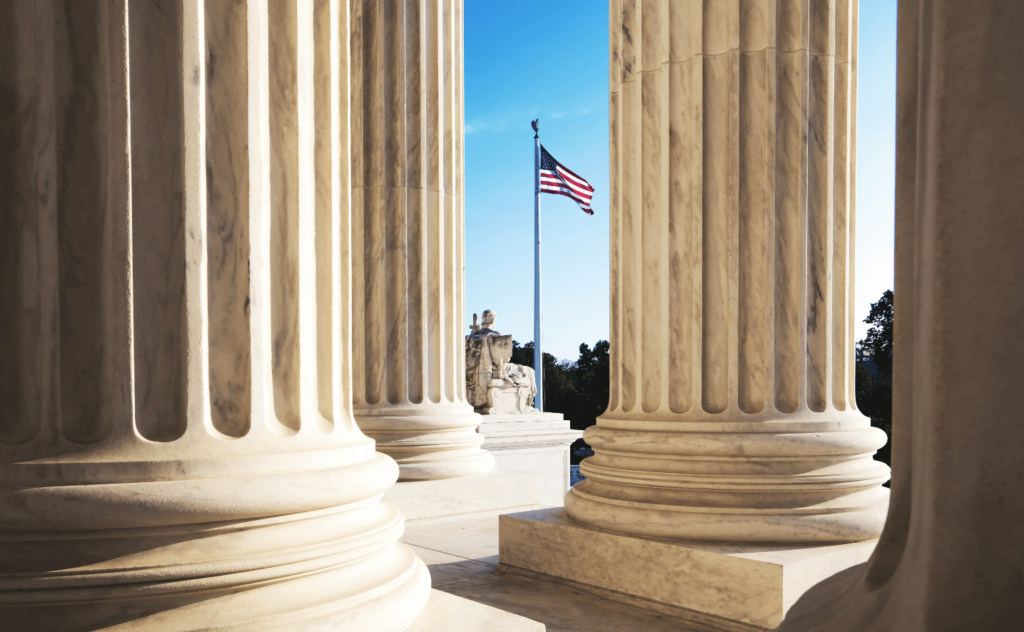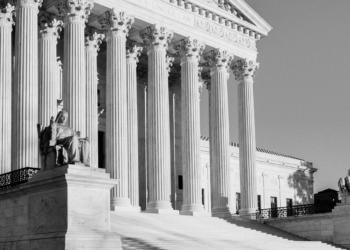Discovery, as the initiated know, has initial disclosure requirements. While each jurisdiction has its own peccadillos, they typically look to the Federal Rules of Civil Procedure for persuasive authority on discovery. Some jurisdictions veer away from the Federal Rules of Civil Procedure and have more lax disclosure requirements. But freedom can be a trap. Taking guidance from the federal rules will ensure a more structured and efficient case and prepare any attorney for federal litigation.
Federal Rule of Civil Procedure 26 mandates a party provide a computation of damages in its initial disclosure.
“for each category of damages claimed by the disclosing party—who must also make available for inspection and copying as under Rule 34 the documents or other evidentiary material, unless privileged or protected from disclosure, on which each computation is based, including materials bearing on the nature and extent of injuries suffered.”
A “reasonable computation of damages is necessary to adequately plan and prepare for trial” and a defendant should not be expected to go into a trial “blind as to the damages claim of the plaintiff.” Shoffner v. Qwest Commc’ns Corp., No. 4:01-CV-54, 2014 WL 3495045, at *11 (E.D. Tenn. June 23, 2014), report and recommendation adopted, No. 4:01-CV-54, 2014 WL 3495175 (E.D. Tenn. July 11, 2014).
And “[w]hile a party may not have all of the information necessary to provide a computation of damages early in the case, it has a duty to diligently obtain the necessary information and prepare and provide its damages computation within the discovery period.” Ingenco Holdings, Llc V. Ace American Insurance Company, Dist. Court, WD Washington 2016.
A Method to the Damages
Further, courts require the plaintiff must provide its method for calculating compensatory damages:
“[T]he `computation’ of damages required by Rule 26(a)(1)(C) contemplates some analysis; for instance, in a claim for lost wages, there should be some information relating to hours worked and pay rate.” Id. However, Plaintiff’s disclosures do not provide any means of computing the “actual damages” claimed. For example, based on Plaintiff’s Second Supplemental Disclosure, Plaintiff seeks “actual damages” based on “lost profits,” but Plaintiff does not identify its computation of expenses and lost profits.
Ketab Corp. V. Mesriani Law Group, Dist. Court, CD California 2016. “The computation of each category of damages requires more than the listing of the broad types of damages so as to enable the defendants to understand the contours of their potential exposure and make informed decisions regarding settlement and discovery.” Schedler V. Fieldturf Usa, Inc., Dist. Court, D. Oregon 2018.
Providing a computation of damages may seem like an onerous burden for a plaintiff when that plaintiff is free to do otherwise. In this case, liberty is a long rope you can hang yourself with.
Being Supererogatory To Be Surely Competent
Following the federal rules wraps that rope around the wrist a few times to keep your firm on a tight leash. You will never be out of touch with your damages case, you will never be out of step with expert testimony, and you will always be prepared for trial. For federal practitioners, the following should serve as a good review and cautionary tale regarding the initial disclosure requirements.
A Serious Duty to the Court
A party’s initial disclosure obligations operate “[a]s the functional equivalent of court-ordered interrogatories.” See Fed. R. Civ. P. 26(a)(1), Adv. Comm. Note (1993). So, submitting the medical bills and telling the defense to figure it out fails to meet the disclosure requirements. Walters v. Meeks, 2011 Nev. Unpub. LEXIS 1633, 2011 WL 4527714. And attempting to shift this burden onto the defense by arguing that the defense never affirmatively requested the information also fails. See Ishow.com, Inc. v. Lennar Corp., 2017 WL 3020927, at *4 (W.D. Wash. July 14, 2017) (“Making certain documents available and promising that someone will testify regarding damages is not a `computation’ and fails to apprise defendants of the extent of their exposure in this case.”). Arguing that because damages are “ongoing,” presently rising, and unclear at the present is also insufficient. Wong V. SEATTLE SCHOOL DISTRICT NO. 1, Dist. Court, WD Washington 2018. St. Romain V. Governor’s Office Of Homeland Security And Emergency Preparedness, Dist. Court, MD Louisiana 2017. “[F]ailure to investigate fully is not an excuse to fail to disclose.” Id. (quoting Big Lots Stores, Inc. v. Luv N’ Care, Ltd., 302 F. App’x 423, 429-30 (6th Cir. 2008)).
The problem parties have with disclosing the initial computation of damages is serious. One jurisdiction that follows the federal rules lists the failure to provide an initial damages computation as one of the five most common mistakes in discovery. And the mistake is costly. Jones v. Wal-Mart Stores, Inc., Case No. 2:15-cv-1454-LDG-GWF (D. Nev. Mar. 28, 2016)( Failing to provide proof of future medical damages can be fatal to a plaintiff’s case), see also Nitta V. Us, Dist. Court, D. Nevada 2019. Consequences of a Rule 26 failure to disclose the computation range from a court refusing to allow a party to rely on documents it should have presented to dismissal of the entire case. Silver State Broad., LLC v. Bergner, 2017 WL 6047537 (9th Cir. Dec. 7, 2017).
Indeed, Wal-Mart, a favorite defendant of plaintiffs’ firms, has dominated the federal district of Nevada utilizing this tactic. See, e.g., Montilla v. Wal-Mart Stores, Inc., 2:13-cv-2348-GMN-VCF, 2015 WL 5458781 (D. Nev. Sept. 16, 2015); Smith v. Wal-Mart Stores, Inc., No. 2:13-cv-1597-MMD-VCF, 2014 WL 3548206, at *3 (D. Nev. July 16, 2014); Patton v. Wal-Mart Stores, Inc., No. 2:12-cv-2142-GMN-VCF, 2013 WL 6158461 (D. Nev. Nov. 20, 2013); Rios v. Wal-Mart Stores, Inc., No. 2:11-cv-1592-KJD-GWF (D. Nev. Dec. 11, 2013); Shakespear v. Wal-Mart Stores, Inc., No. 2:12-cv-1064-MMD-PAL (D. Nev. July 8, 2013); Olaya v. Wal-Mart Stores, Inc., No. 2:11-cv-0997-KJD-CWH (D. Nev. Aug. 7, 2012); Baltodano v. Wal-Mart Stores, Inc., No. 2:10-cv-2062-JCM-RJJ (D. Nev. Aug. 31, 2011).
The Unraveling of a Case
The mistake unfolds generally as thus: a plaintiff will provide a computation based on medical bills or current losses, and then vaguely allude to a category of future damages — lost wages, or future medicals, for which the plaintiff has yet to provide proof.
What’s disclosed here may mirror the actual state of the state court case at this stage: an idea of actual damages but a hazy idea of the future damages or special theories of damages.
Plaintiffs from here on tend to make one of three errors:
Failing to Furnish the Method of Calculating Damages.
Plaintiffs often will indeed put a number to their damages but fail to allow the defendant(s) to independently analyze the data. Silicon Knights, Inc. v. Epic Games, Inc., No. 5:07-CV-275-D, 2012 WL 1596722, at *7 (E.D. N.C. May 7, 2012) (explaining that “Rule 26(a)(1)(A)(iii) and Rule 26(e) are designed to provide a damages computation and analysis during discovery” so that the “opposing party may then prepare to meet that evidence via cross examination and via evidence in its rebuttal case (such as its own expert witness)”).
The plaintiff must demonstrate, either through expert testimony or otherwise, that it has used some kind of method in calculating the damages. And often enough, through sheer oversight, a failure to procure the required testimony, or the failure to calculate the damages him or herself, plaintiff counsel comes up short.
Waiting too long to supplement initial disclosures.
Plaintiffs, through failing to procure the proper support for these theories, often violate Rule 26 because they unable to supplement their initial disclosure or change their damages theories too late in the case. Estate of Gonzalez v. Hickman, No. 05-00660-MMM (RCx), 2007 WL 3237635, at *4 (C.D. Cal. June 28, 2007) (motions in limine brought after summary judgment, after expert discovery, and just before trial); Am. Realty Trust, Inc. v. Matisse Partners, L.L.C., No. CIV.A.3:00-CV-1801-G, 2002 WL 1489543, at *1 (N.D. Tex. July 10, 2002) (motion to exclude evidence made during pre-trial conference, where entirely new theory of damages raised in supplemental disclosures for the first time two weeks after the close of discovery and two months before trial).
Fail to allege all damages theories in the initial disclosures or any damage theory at all.
Worse still, plaintiffs unfamiliar with the correct damages theories that expert testimony must support can miss their chance altogether by failing to even list those damages theories in the initial disclosure. Sometimes, plaintiffs miss the boat altogether on the computation of damages. Hedgemon V. Emerald Correctional Management, Dist. Court, WD Louisiana 2016.
Failing to Adequately Prepare for Hearsay Objections
Ultimately, falling behind on supplementing a disclosure will also ensure that a plaintiff will run ground against the coming tide of hearsay objections to testimony on damages. If the methods involve some analysis of out of court statements or records, which most if not all do, counsel needs to be prepared for this battle.
Cases like People v. Sanchez, 63 Cal. 4th 665 (2016) and even the comments to FRE 703 are restricting the use of expert testimony to admit the inadmissible. Damages calculations often use methods relying on outside data or other hearsay.
Failing to Adequately Disclose Experts
Certain jurisdictions make expert disclosure optional. In the bustle of shuffling papers and impending deadlines from multiple cases, optional can morph into unnecessary which can transform into I should have done so but will go without. Optional disclosure may remove counsel’s chance to refine his or her damages case before trial.
The Funhouse Mirror
While the stakes are lower in some state courts — sanctions are inapplicable — some stakes are higher, like the risk of erroneously handling a case. Without an early analysis of damages theories, without a clear timeline of expert retention, and without adequate testing of your expert and theirs before trial, your damages case is at risk. Or worse still, completely in the hands of a jury (just kidding!).
The Work Involved May Be Too Great At Such An Early Stage
The federal initial disclosure rules allow plaintiffs to allege damages theories that typically require expert testimony vaguely in their initial disclosures, so long as the plaintiff supplements their initial disclosure later on in the case. But often, and this will be an objection to those in state practice without doubt, the work of calculating damages is immense. And plaintiffsput off doing so until it is too late. Commonwealth Motorcycles, Inc. V. Ducati North America, Inc., Dist. Court, ED Kentucky 2017. The bottom line is that plaintiffs’ lawyers generally lack the expertise to calculate many types of damages and benefit greatly from retaining an expert to do so.
The reason behind early expert retention and the ongoing progression of a damages case is best put here:
“To provide meaningful calculations, patentees need lots of information from accused infringers. But the expense of producing lots of information can only be justified by a meaningful calculation suggesting that substantial dollars are actually at stake.”
Here, despite spending “a small fortune” on discovery and having “exchanged reams of data,” and despite being just a “few weeks from the close of fact discovery,” the parties in this case still lacked “any firm sense of whether this is a $1 case or a case worth billions.” What Judge Grewal found “[e]ven more remarkable” is that these circumstances “are not unusual” in patent cases, where parties prefer to “bludgeon first and value second.”
Corning Optical Communications Wireless Ltd. v. Solid, Inc., No. 5:14-cv-03750-PSG, 2015 WL 1726749 71889 (N.D. Cal. Feb. 12, 2015).
Early Expert Retention Avoids This Problem
Obtaining an expert early in the pre-litigation stages ensures that your damages calculations will comply with Rule 26’s disclosure requirements.
A consulting or testifying expert’s work ensures that the “documentation and evidence required by Rule 26 [is] sufficient to allow the opposing party to `independently analyze’ the claim.” Champion Foodservice, LLC v. Vista Food Exch., Inc., No. 1:13-CV-1195, 2016 WL 4468000, at *5 (N.D. Ohio Aug. 23, 2016)
Indeed, the assumption of expert retention is why a precise method is unnecessary to start with if future expert testimony will expand on the method. This assumption exists because “precise damages computation may be impossible until the plaintiff obtains some discovery, undergoes more treatment, and, in some cases, obtains expert analysis.” Edwards v. Lattimer, Dist. Court, D. Nevada 2020. But “future expert analysis does not relieve a plaintiff of providing the information reasonably available to her as for her damages computation.” Id.
If it becomes clear based on new circumstances that the damages computation is incorrect or incomplete, the plaintiff has a duty to supplement the initial damages computation. There is no bright-line rule that such supplementation is improper if made after the expert disclosure deadline or even after the close of discovery.
Id. The lack of a bright-line rule, the duty to continuously monitor data, and the duty to analyze and re-analyze that data can be a water slide to the loser pool. An expert’s presence at the dawn of litigation takes this workload off plaintiff’s counsel and ensures compliance with Rule 26. Further, the presence of an expert encourages early settlement.
The Federal Disclosure Requirements as a Guide to a Better Case
In federal court, retaining an expert early when damages are unclear despite all or many of the documents being present to assess damages is crucial. And in state court, while it may seem like organizational paternalism to use FRCP 26 to guide your case management — the traps and pitfalls it helps one avoid make the extra work all the more worthwhile.










